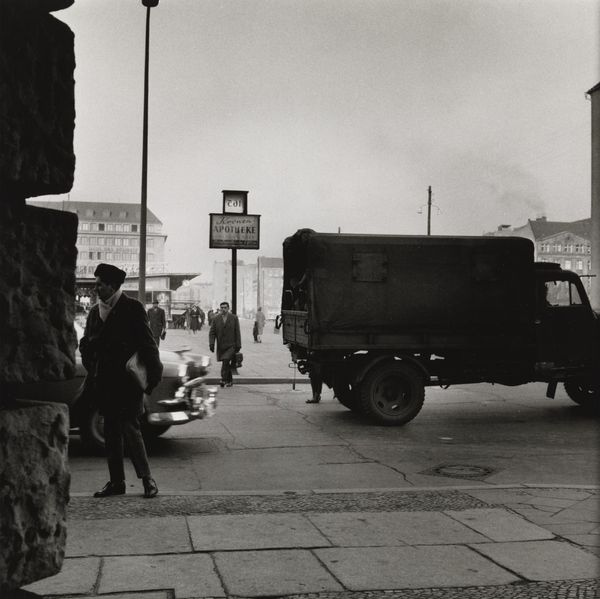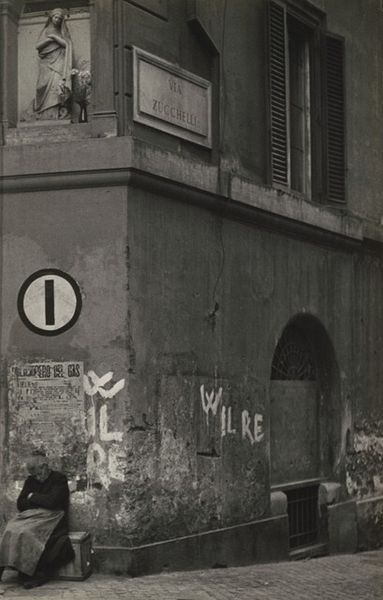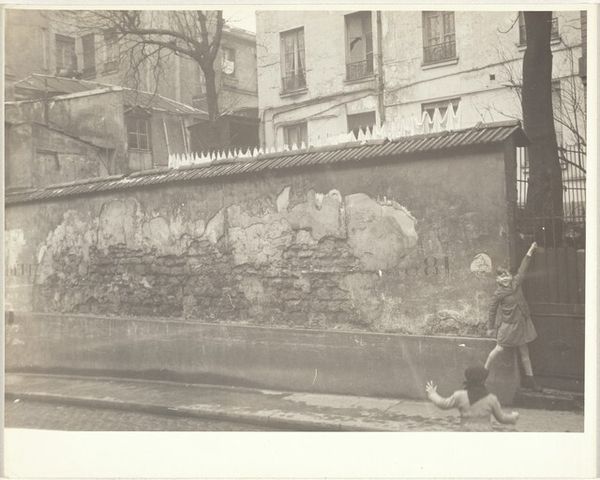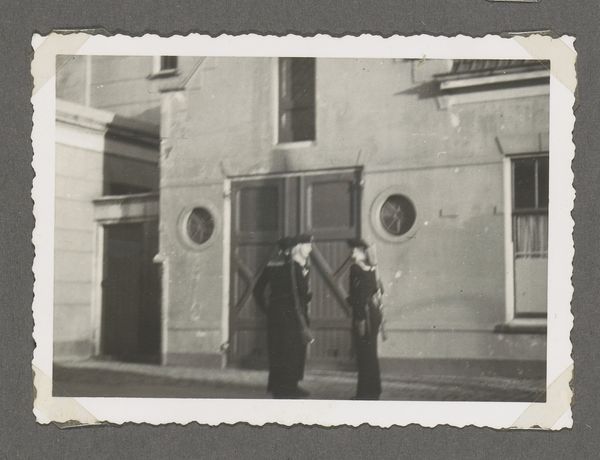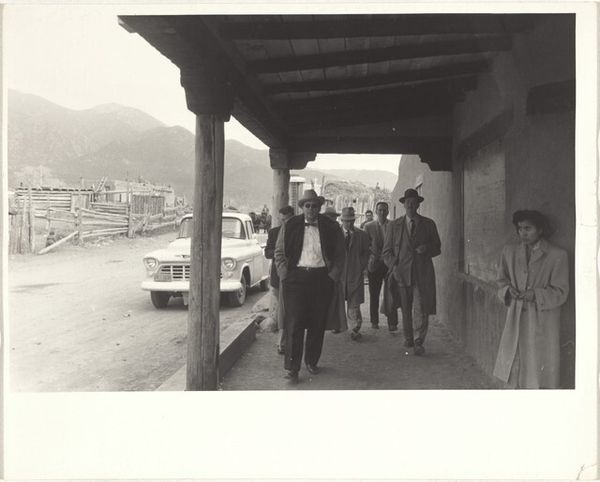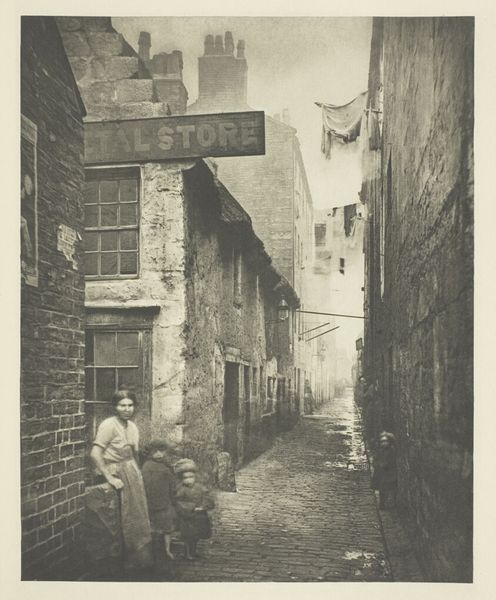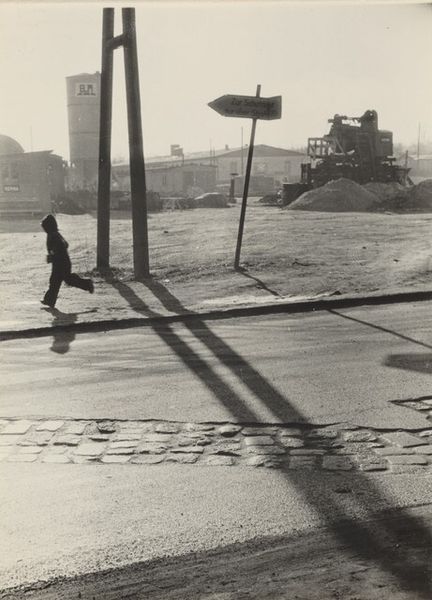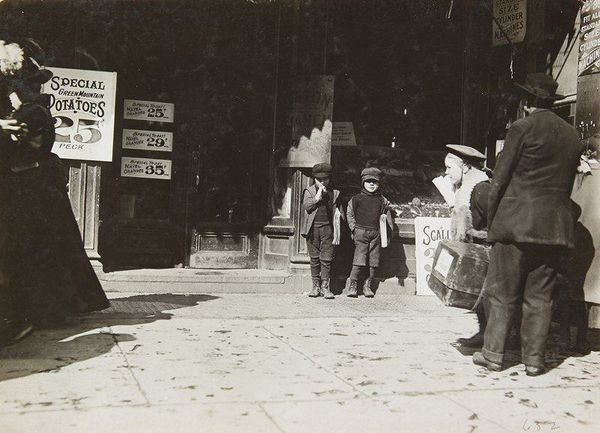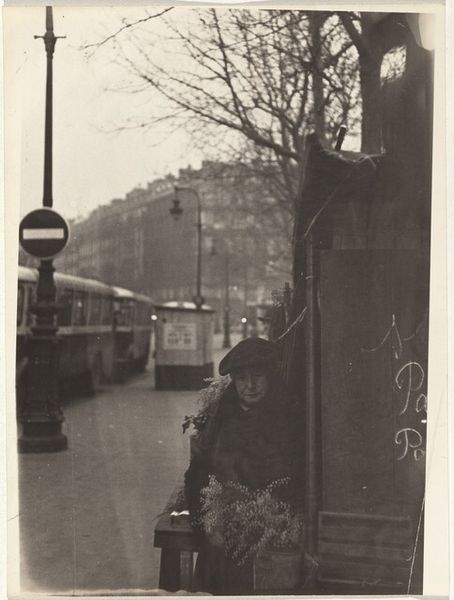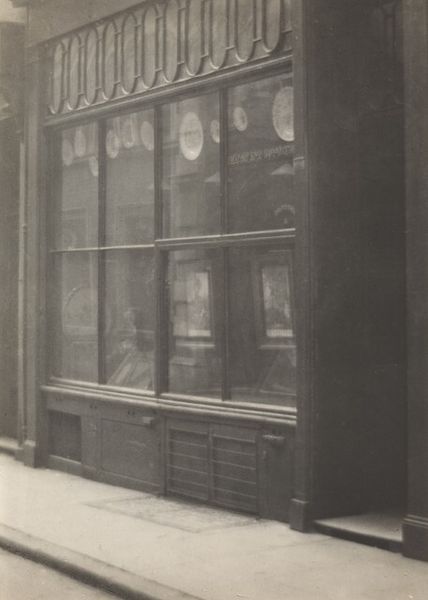
Dimensions: image: 21.2 × 33.3 cm (8 3/8 × 13 1/8 in.)
Copyright: National Gallery of Art: CC0 1.0
Curator: The image before us, captured by Robert Frank in 1953, is titled "Main Street, Caerau, Wales, 3:45pm". It's a gelatin silver print, a medium that perfectly captures the somber mood of the scene. Editor: It’s undeniably bleak. The monochrome tones and rain-slicked street evoke a feeling of post-war austerity. There's an almost unsettling juxtaposition between the decaying building and the jaunty cartoon advertisement for "Brasso". Curator: Absolutely. Frank was deeply interested in representing everyday life, especially the impact of industry and consumption on society. That Brasso advertisement, a product intended for cleaning and polishing metals, feels like a pointed commentary when juxtaposed with the weathering of the town and its people. Consider the materiality of the photograph itself. Gelatin silver prints, common in this era, became a means for accessible art reflecting democratic sensibilities. Editor: Indeed. The image itself is incredibly telling about the era's socio-economic landscape. We can observe that the street scene depicts working-class individuals heading, perhaps, to the pub after a hard day's shift in a place deeply impacted by coal production decline. Notice the buildings; the composition emphasizes them, alluding to institutional structures bearing on their working lives. It gives viewers a visceral understanding of a place wrestling with economic shifts. Curator: The choice to focus on the main street – its architecture, its advertisements, the pace and movement of its inhabitants, all made legible to the photograph itself – is essential. And look at how Frank uses shadow and light. Note how the photograph presents realism blended with aesthetic concerns. Editor: It also evokes a certain emotional impact. The anonymity of the figures, their dark clothing and hurried pace, further reinforces the impression of hardship. Considering that context, it serves as a reminder of both the beauty and challenges of daily life and historical photography itself as both archival record and medium for artistic creation. Curator: It makes you wonder about the labor conditions of the region. These figures have faces hidden by shadow, or they are further in the background walking together down the street, making their material situations feel palpable. I am left contemplating the economic landscape, its consequences, and the nature of progress. Editor: Yes, I find that after examining this image more thoroughly, it highlights how powerful a photo can be when viewed from a historical and material perspective.
Comments
No comments
Be the first to comment and join the conversation on the ultimate creative platform.
